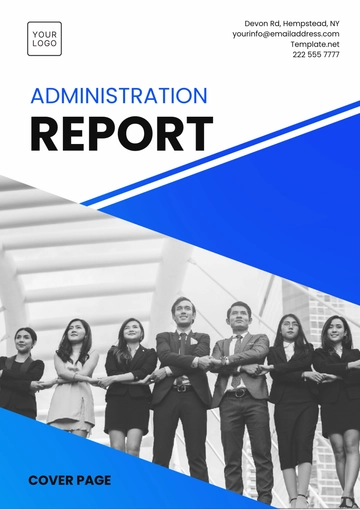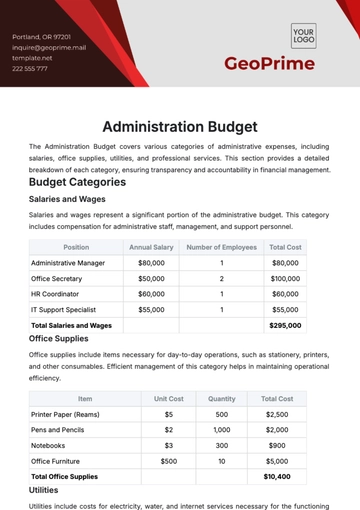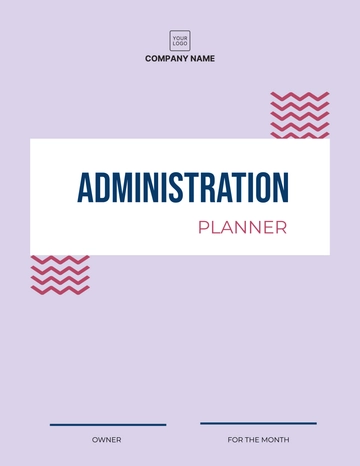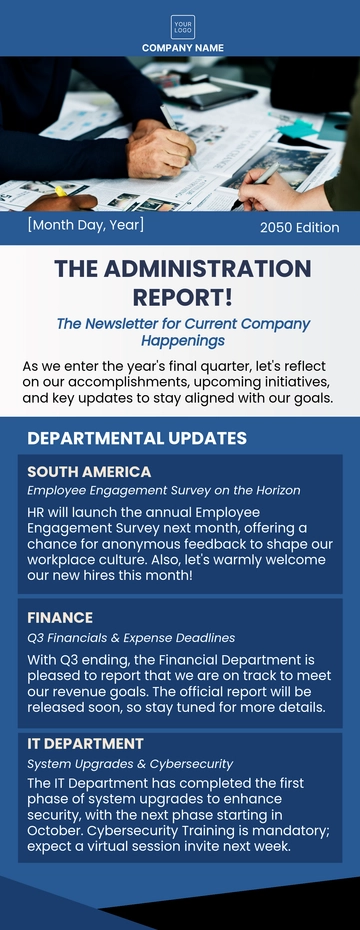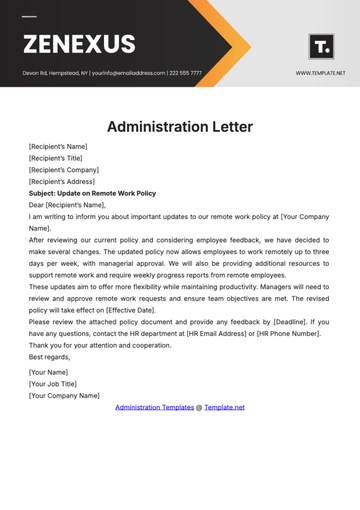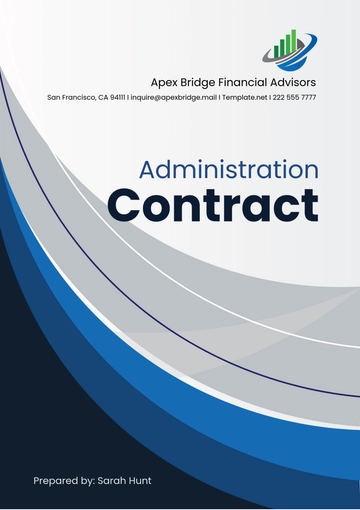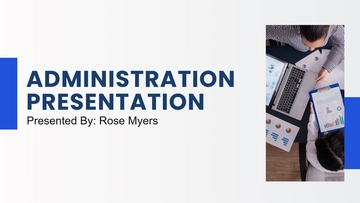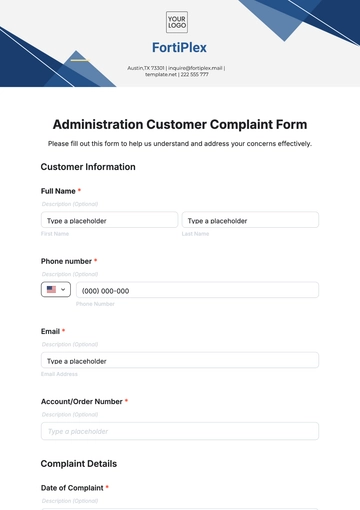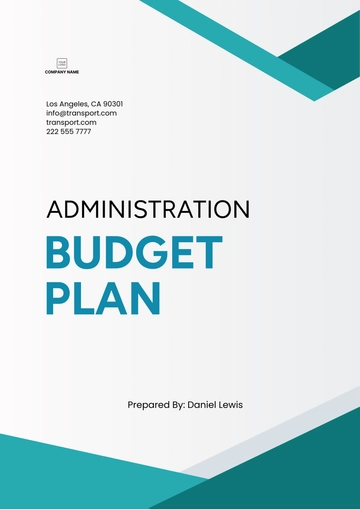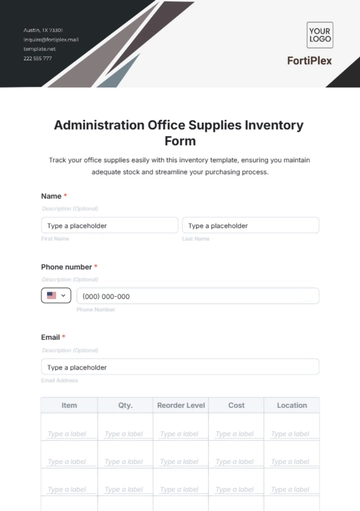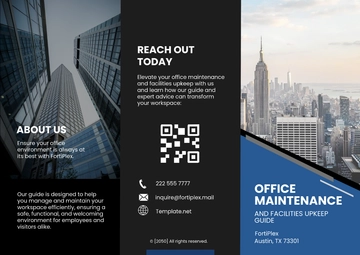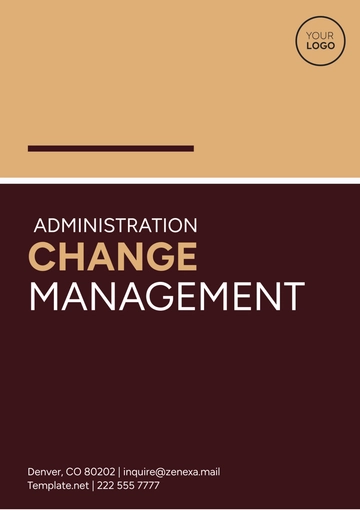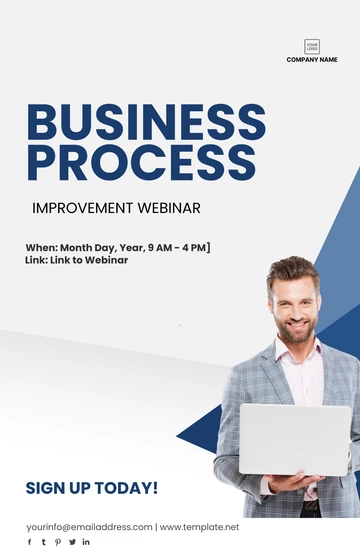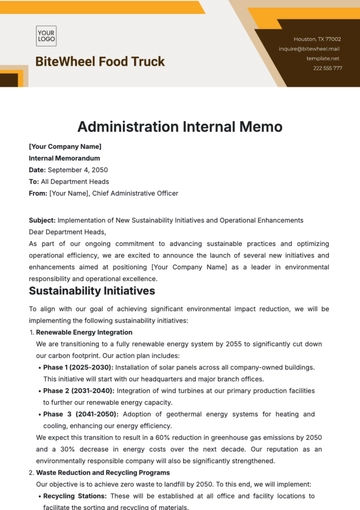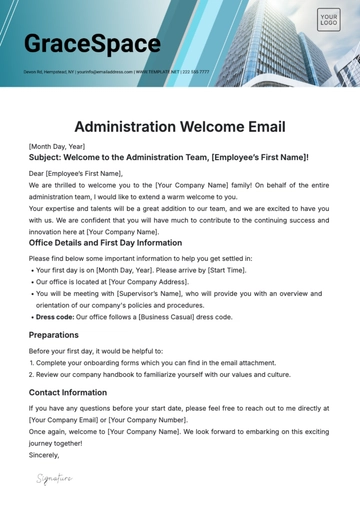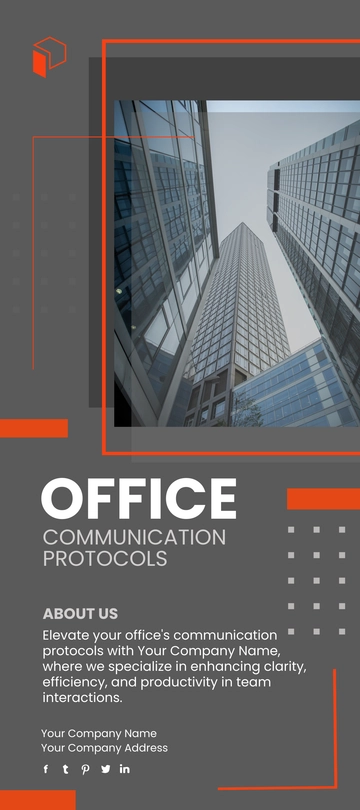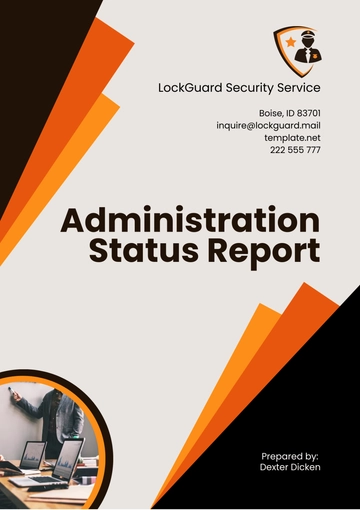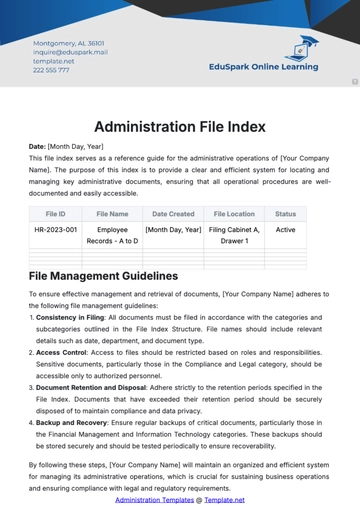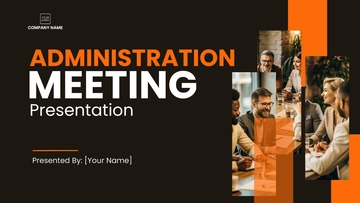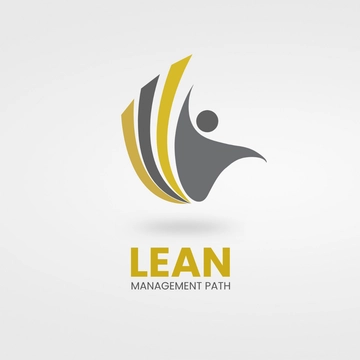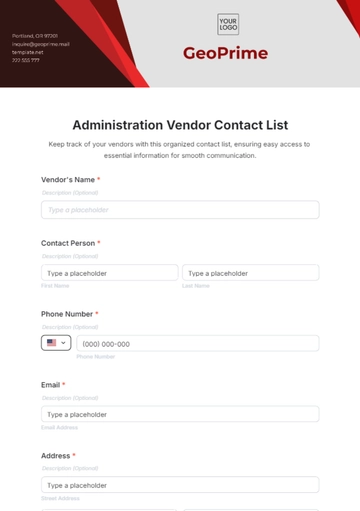Free Administration Critical Meeting Protocol
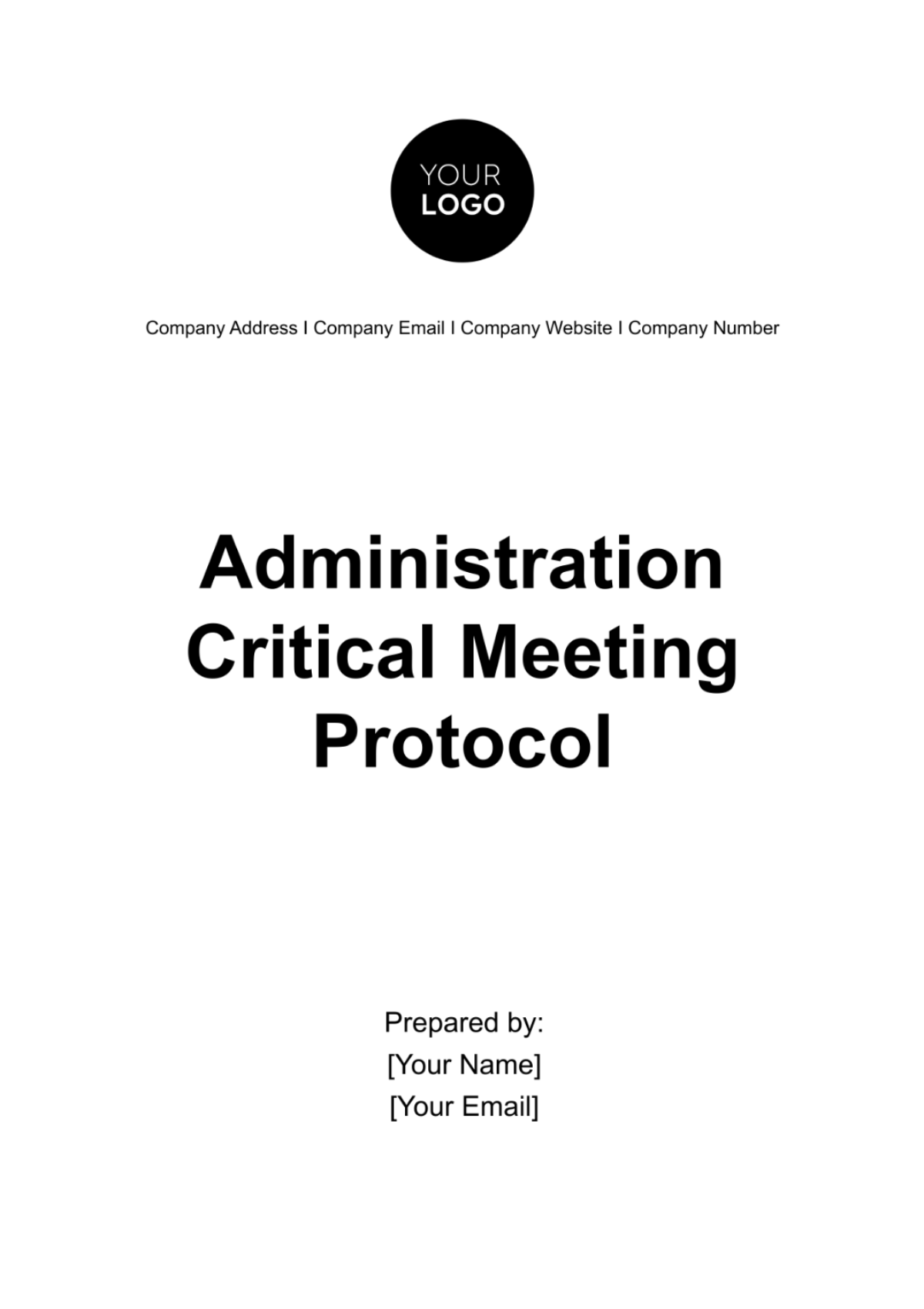
I. Introduction
Purpose of the Protocol
The Administration Critical Meeting Protocol (ACMP) is implemented to foster a structured and streamlined approach to crucial organizational gatherings within [Your Company Name]. By establishing clear guidelines, the protocol aims to enhance communication, decision-making processes, and overall efficiency during these critical meetings. It sets the foundation for a standardized framework that ensures all participants are aligned with the organization's objectives and contributes to the success of key initiatives.
Scope and Applicability
This protocol is applicable to a broad spectrum of meetings convened by the administrative team, ranging from high-level executive discussions to departmental reviews and strategic planning sessions. It ensures that the principles outlined herein are flexible enough to cater to diverse meeting scenarios while maintaining a consistent standard of conduct and productivity across the organization.
Definitions of Key Terms
To facilitate a common understanding, key terms are defined within the protocol. This includes specifying what qualifies as a "Critical Meeting," delineating the responsibilities of the "Chairperson" in moderating the meeting, clarifying the roles and expectations of "Attendees," and designating a "Note Taker" responsible for documenting crucial discussions and decisions.
II. Pre-Meeting Procedures
Identification of Critical Meetings
Critical meetings are identified collaboratively by the administrative team and department heads, with a focus on those pivotal to strategic planning, decision-making, and operational success. A proactive approach is taken to assess the organizational landscape and identify opportunities where effective meetings can drive positive outcomes.
Meeting Scheduling and Notification
To maximize attendance and preparation, meetings are scheduled well in advance using [Your Company Name]'s preferred scheduling tool. Notifications are sent out at least [00] days prior to the meeting, providing participants with ample time to prepare and review relevant materials, contributing to more informed and productive discussions.
Agenda Creation and Distribution
The agenda creation process involves close collaboration between the chairperson and key stakeholders. The agenda, a comprehensive document outlining meeting objectives, discussion topics, and expected outcomes, is then distributed to participants well in advance. This ensures that participants arrive prepared and ready to engage in meaningful conversations.
Pre-Meeting Preparation Checklist
The success of critical meetings begins with thorough pre-meeting preparations. The checklist includes room setup considerations, audio-visual equipment checks, and the distribution of any pre-read materials or reports relevant to agenda items. This comprehensive approach ensures that meetings start smoothly and proceed without interruptions.
III. Participant Roles and Responsibilities
Chairperson/Moderator Responsibilities
The chairperson plays a pivotal role in ensuring the smooth conduct of the meeting. Responsibilities include setting the meeting agenda, facilitating discussions, managing time effectively, and ensuring all participants have the opportunity to contribute. Additionally, the chairperson is responsible for maintaining decorum, resolving conflicts if they arise, and ensuring that decisions are documented accurately for follow-up actions.
Attendee Expectations
Attendees are expected to actively participate in discussions by sharing their expertise, insights, and perspectives related to agenda items. It is imperative for attendees to arrive on time, adequately prepared, and ready to engage in constructive dialogue. Respect for fellow attendees, including active listening and refraining from disruptive behavior, fosters a conducive environment for productive collaboration.
Designated Note Taker
The designated note taker fulfills a critical role in capturing the essence of discussions and decisions made during the meeting. Their responsibilities include recording meeting minutes, documenting key points raised, tracking action items and responsibilities, and ensuring the accuracy and clarity of the meeting record. This role ensures that valuable insights and commitments made during the meeting are documented for reference and follow-up.
Timekeeper Role
The timekeeper is tasked with monitoring the pace of the meeting to ensure that discussions remain focused and adhere to the allotted time for each agenda item. They provide timely reminders to the chairperson and participants regarding time constraints, facilitating efficient use of meeting time. By actively managing time, the timekeeper helps prevent discussions from lingering on non-priority topics and ensures that all agenda items are adequately addressed within the scheduled timeframe.
Additionally, the timekeeper assists in maintaining momentum during discussions, gently guiding participants to stay on track and redirecting attention to the agenda when necessary. By promoting adherence to time limits, the timekeeper helps maximize the productivity of the meeting and respects the valuable time of all participants.
IV. Meeting Conduct Guidelines
Punctuality and Attendance
Participants are expected to arrive promptly for scheduled meetings, respecting the time commitments of fellow attendees. Latecomers are encouraged to minimize disruptions by entering the meeting room quietly. If an unavoidable delay occurs, participants should notify the chairperson or designated point of contact in advance.
Respectful Communication
A culture of respect and professionalism is maintained throughout the meeting. Participants are encouraged to express their opinions openly while remaining mindful of others' viewpoints. Disagreements are addressed constructively, with a focus on finding common ground and reaching consensus where possible. Any disrespectful or disruptive behavior is addressed promptly by the chairperson to maintain a conducive environment for collaboration.
Agenda Adherence
The meeting follows the predetermined agenda to ensure that discussions remain focused and productive. The chairperson monitors the agenda closely, guiding discussions to stay on topic and allocating time appropriately to each agenda item. Any proposed deviations from the agenda are evaluated based on their relevance to meeting objectives and may be addressed at the discretion of the chairperson.
Decision-Making Processes
Decisions are made through a collaborative and transparent process, taking into account input from all relevant stakeholders. Consensus is sought whenever possible, with the chairperson facilitating discussion to ensure that all viewpoints are considered. In cases where consensus cannot be reached, alternative decision-making mechanisms, such as voting, may be employed as outlined in the meeting protocol.
Management of Divergent Views
Diverse perspectives are valued and encouraged during discussions. Participants are empowered to voice dissenting opinions respectfully, fostering an environment where differing viewpoints can be explored constructively. The chairperson facilitates dialogue to bridge gaps in understanding and encourages compromise when necessary to achieve common objectives.
V. Meeting Structure and Format
Opening Procedures
The meeting begins with the chairperson welcoming attendees and providing an overview of the agenda and objectives. Any necessary introductions are made, ensuring that all participants are familiar with each other's roles and responsibilities. This sets the tone for the meeting and ensures that everyone is aligned with the purpose and expectations.
Agenda Items Handling
Each agenda item is presented systematically, with relevant background information provided as needed. Participants are encouraged to contribute their insights and expertise to the discussion, guided by the chairperson to ensure that conversations remain focused and productive. Action items and decisions arising from each agenda item are documented for clarity and accountability.
Closing Procedures
As the meeting draws to a close, the chairperson summarizes key discussion points, decisions made, and action items assigned. Any follow-up actions or next steps are clarified, along with expectations for their completion. Participants are given the opportunity to ask questions or seek clarification before adjourning the meeting, ensuring that everyone is clear on their responsibilities moving forward.
VI. Technology and Communication Protocols
Use of Collaboration Tools
Technology tools such as video conferencing, document sharing platforms, and instant messaging are utilized to facilitate remote participation and enhance collaboration. Participants are provided with instructions on how to access and use these tools effectively to ensure seamless communication during the meeting.
Technical Support Contact Information
In the event of technical issues during the meeting, participants are provided with contact information for technical support personnel who can assist with troubleshooting. This ensures that any disruptions caused by technology-related issues can be addressed promptly, minimizing downtime and maximizing productivity.
Communication Channels During and After Meetings
Clear communication channels are established for participants to raise questions, provide feedback, or seek clarification during the meeting. Additionally, post-meeting communication channels are designated for follow-up discussions, sharing of meeting minutes, and coordination of action items to ensure continuity of collaboration beyond the meeting room.
VII. Decision-Making and Documentation
Criteria for Decision-Making
Decisions made during critical meetings are guided by established criteria aligned with organizational goals and values. Factors such as feasibility, impact, and alignment with strategic objectives are considered when evaluating options. The decision-making process prioritizes consensus-building and seeks to address concerns raised by stakeholders to arrive at informed and actionable decisions.
Recording Meeting Minutes
Accurate and comprehensive meeting minutes are recorded by the designated note taker throughout the meeting. Minutes capture key discussion points, decisions made, action items assigned, and any other relevant information. This documentation serves as an official record of the meeting proceedings and provides a reference for follow-up actions and accountability.
Distribution of Meeting Minutes
Meeting minutes are distributed to all participants in a timely manner following the meeting, typically within [00] business days. Participants are encouraged to review the minutes for accuracy and provide any necessary corrections or clarifications. Once finalized, the minutes are archived for future reference and shared with relevant stakeholders as needed.
Archiving and Accessing Meeting Records
Meeting records, including agendas, minutes, and supporting documents, are archived in [Your Company Name]'s designated repository for easy access and retrieval. Access to meeting records is granted to authorized personnel, ensuring that relevant information is available to stakeholders as needed for decision-making, reporting, and compliance purposes.
VIII. Post-Meeting Evaluation and Improvement
Feedback Collection Mechanisms
The process for collecting feedback on the effectiveness of meetings and the adherence to the set protocol involves soliciting input from participants. This input is gathered using various methods such as surveys, conducting interviews, or employing other feedback mechanisms. The feedback, which is vital in assessing and enhancing the effectiveness of the meetings, plays a critical role in identifying any areas that may necessitate improvements. The information also informs any necessary revisions to be made on the protocol. These revisions may be carried out based on the feedback and the need to streamline the protocol to make meetings more effective and efficient.
Review of Meeting Effectiveness
The team that handles administrative tasks has the responsibility of conducting regular and scheduled evaluations aimed at assessing the effectiveness of meetings. This includes a detailed and comprehensive analysis of a variety of factors that play a critical role in the success of a meeting. The factors considered in this analysis include how relevant the agenda of the meeting was, how engaged the participants were during the meeting, and what type of decision-making outcomes were produced from the meeting. The very purpose of these reviews is to gather useful insights, which can then be used in a constructive manner to refine and enhance the processes employed during meetings. Continuous refinement and improvement of these processes is considered crucial as it helps to optimize future meetings. Consequently, meetings in the future are carried out with higher efficiency, having a significantly increased impact leading to more productive and successful outcomes.
Identification of Areas for Improvement
Based on feedback and performance evaluations, areas for improvement are identified and prioritized. This may include enhancements to meeting facilitation techniques, adjustments to agenda structures, or improvements to communication and collaboration tools.
Revision of Protocol as Needed
The protocol is reviewed and updated periodically to reflect evolving organizational needs, industry best practices, and feedback from stakeholders. Revisions are made collaboratively by the administrative team and relevant stakeholders, ensuring that the protocol remains relevant and effective in guiding critical meetings within the organization.
IX. Compliance and Enforcement
Compliance with Protocol Requirements
It is an expectation that all individuals who will be participating in the meeting will strictly uphold and follow the instructions, rules, and standards as such have been highlighted and specified within the Administration Critical Meeting Protocol. The importance for such stringent adherence to these guidelines is that it ensures there is a consistent approach in how meetings are carried out, how decisions are made during meetings, as well as how records and documentation are kept post-meeting throughout the entire organization.
Consequences for Non-Compliance
Whenever there are occurrences of non-compliance with the protocol at [Your Company Name], it is dealt with by invoking the disciplinary measures that have already been set down in the policies and procedures of our company. The way this form of non-compliance is handled can be varied depending on how severe the infringement is. Possibilities for consequences could include being given advice and counsel in a less formal setting or having to go through the process of formal disciplinary action being taken against you.
Escalation Procedures for Issues Arising During Meetings
In the event of conflicts, disruptions, or other issues during meetings, escalation procedures are followed to resolve the issue promptly. The chairperson or designated authority intervenes to address the issue, facilitate resolution, and restore order to the meeting proceedings.
- 100% Customizable, free editor
- Access 1 Million+ Templates, photo’s & graphics
- Download or share as a template
- Click and replace photos, graphics, text, backgrounds
- Resize, crop, AI write & more
- Access advanced editor
Discover the ultimate solution for streamlined meetings with the Administration Critical Meeting Protocol Template from Template.net. This editable and customizable template, powered by an AI Editor Tool, offers a comprehensive framework for efficient meeting management. Ensure clarity, accountability, and productivity in every critical meeting with this essential tool for organizational success.
